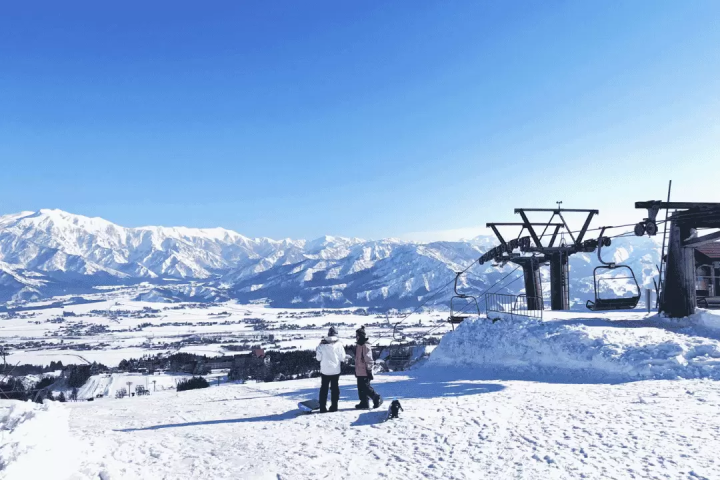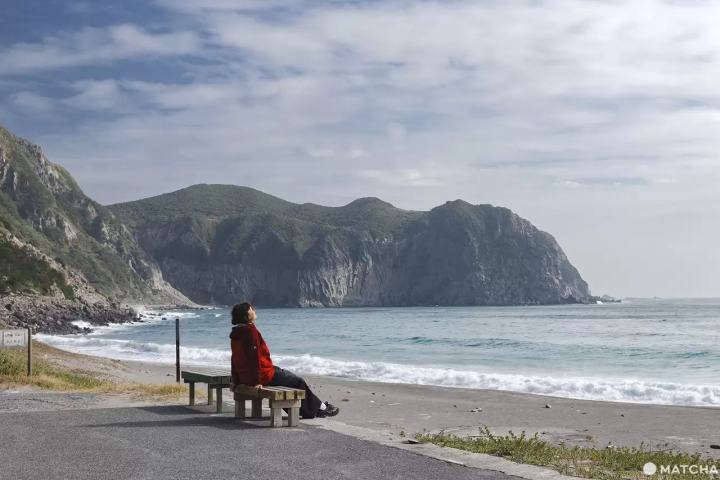[Shimanto City, Kochi Prefecture] Flowers coloring the Shimanto River basin
![[Shimanto City, Kochi Prefecture] Flowers coloring the Shimanto River basin](https://resources.matcha-jp.com/resize/720x2000/2024/02/01-164733.webp)
Introducing the seasonal flower scenery that colors the Shimanto River basin.
-
Table of Contents
- 1. Climate of Shimanto City
- 2 Flowers that grow in a warm climate
- 3 Events to enjoy the arrival of spring
1. Climate of Shimanto City
Shimanto City is blessed with a natural environment, with rich mountain forests, the clear Shimanto River, and the southeast facing the Pacific Ocean. Additionally, the average temperature from 1991 to 2020 was 16.5℃, and the average annual precipitation was 2,877.9mm, making it a Pacific-type warm climate.
2 Flowers that grow in a warm climate
spring
In late February, when the warm sunlight of spring changes, the willow forest that stretches along the lower reaches of the Shimanto River will sprout yellow-green buds, and 10 million rapeseed flowers will bloom like a yellow carpet across the willow forest. This is a typical scenery that heralds the arrival of spring in the Shimanto River basin.
![[Shimanto City, Kochi Prefecture] Flowers coloring the Shimanto River basin](https://resources.matcha-jp.com/resize/720x2000/2024/02/01-164735.webp)
In late March, the cherry blossoms are in full bloom at Tamematsu Park, a famous cherry blossom viewing spot located on a hill in the city. During the cherry blossom season, the bonbori lights are lit and you can enjoy the cherry blossoms at night. The Shimanto City Folk Museum is located close to Tamematsu Park, so enjoy the scenery from the observation floor while getting a feel for the history of the local area.
![[Shimanto City, Kochi Prefecture] Flowers coloring the Shimanto River basin](https://resources.matcha-jp.com/resize/720x2000/2024/02/01-164736.webp)
![[Shimanto City, Kochi Prefecture] Flowers coloring the Shimanto River basin](https://resources.matcha-jp.com/resize/720x2000/2024/02/01-164739.webp)
"Shimanto City Local Museum" Opening hours: 9:00-17:00, Closed: Wednesdays
In addition, at Shimanto River Sakura Zutsumi Park, you can enjoy viewing the Shimanto River in spring while sitting on the neatly planted cherry trees and well-maintained lawns. In the lower reaches of the Shimanto River, rice cultivation begins at this time of year, and frogs begin to croak.
![[Shimanto City, Kochi Prefecture] Flowers coloring the Shimanto River basin](https://resources.matcha-jp.com/resize/720x2000/2024/02/01-164740.webp)
![[Shimanto City, Kochi Prefecture] Flowers coloring the Shimanto River basin](https://resources.matcha-jp.com/resize/720x2000/2024/02/01-164741.webp)
When the cherry blossoms fall and turn into leaf cherry blossoms, if you turn your eyes toward Kozanji Temple, you will see the city's flower, the wisteria, coloring the mountainside in purple. Kozanji Temple is also a popular spot for hiking and bird watching. There is also a park with athletic facilities, where parents and children can have fun on holidays.
![[Shimanto City, Kochi Prefecture] Flowers coloring the Shimanto River basin](https://resources.matcha-jp.com/resize/720x2000/2024/02/01-164742.webp)
![[Shimanto City, Kochi Prefecture] Flowers coloring the Shimanto River basin](https://resources.matcha-jp.com/resize/720x2000/2024/02/01-164744.webp)
![[Shimanto City, Kochi Prefecture] Flowers coloring the Shimanto River basin](https://resources.matcha-jp.com/resize/720x2000/2024/02/01-164745.webp)
"Ichijo Shrine" wisteria that is not blooming
In May, when the wind is fragrant, roses and lilies grown by local residents in the inland Nishi-Tosa district decorate the peaceful countryside. Approximately 500 roses at Omiya Rose Garden and approximately 12,000 lilies at Nishitosa Yabuke City welcome visitors.
![[Shimanto City, Kochi Prefecture] Flowers coloring the Shimanto River basin](https://resources.matcha-jp.com/resize/720x2000/2024/02/01-164752.webp)
![[Shimanto City, Kochi Prefecture] Flowers coloring the Shimanto River basin](https://resources.matcha-jp.com/resize/720x2000/2024/02/01-164754.webp)
![[Shimanto City, Kochi Prefecture] Flowers coloring the Shimanto River basin](https://resources.matcha-jp.com/resize/720x2000/2024/02/01-164756.webp)
At this time of year, water lilies and irises decorate the waterfront where dragonflies fly around in the Dragonfly Nature Park. The Dragonfly Nature Park was established in 1985 as the world's first dragonfly sanctuary, and has recorded 81 species of dragonflies so far. At the Shimanto River Gakuyukan Akitsui, which is attached to the park, you can see exhibits of insect specimens from around the world, including 3,000 specimens of about 1,000 species of dragonflies from around the world, as well as fish that live in the Shimanto River.
![[Shimanto City, Kochi Prefecture] Flowers coloring the Shimanto River basin](https://resources.matcha-jp.com/resize/720x2000/2024/02/01-164760.webp)
![[Shimanto City, Kochi Prefecture] Flowers coloring the Shimanto River basin](https://resources.matcha-jp.com/resize/720x2000/2024/02/01-164776.webp)
"Shimantogawa Gakuyukan Akitsui" Opening hours: 9:00-17:00, Closed on Mondays
early summer
June with rainy and cloudy skies. At Annami Waterwheel Village, the clatter of the waterwheels and the colorful blooming of hydrangeas along the waterway delight the viewers. There is an arbor set up near the waterway, where you can sit and enjoy the view of the hydrangeas and the countryside.
![[Shimanto City, Kochi Prefecture] Flowers coloring the Shimanto River basin](https://resources.matcha-jp.com/resize/720x2000/2024/02/01-164765.webp)
![[Shimanto City, Kochi Prefecture] Flowers coloring the Shimanto River basin](https://resources.matcha-jp.com/resize/720x2000/2024/02/01-164766.webp)
In the inland areas of Shimanto City, the summer heat is severe, and in addition to the Foehn phenomenon when the wind blows from the northwest, the sea breeze from the Pacific Ocean also becomes difficult to enter, resulting in high temperatures. On August 12, 2013, a temperature of 41.0℃ was observed in Ekawasaki, the highest temperature in Japan that year.
autumn
Late September when the sky is a little higher. In the Irita willow forest, the manjushana flowers turn the whole area bright red, and autumn insects begin to chirp in the grass. From around this time, the intense heat gradually begins to ease.
![[Shimanto City, Kochi Prefecture] Flowers coloring the Shimanto River basin](https://resources.matcha-jp.com/resize/720x2000/2024/02/01-164767.webp)
In early November, when autumn deepens, you can see beautiful autumn leaves along the valley of the Kuroson River, a tributary of the Shimanto River.
![[Shimanto City, Kochi Prefecture] Flowers coloring the Shimanto River basin](https://resources.matcha-jp.com/resize/720x2000/2024/02/01-164768.webp)
![[Shimanto City, Kochi Prefecture] Flowers coloring the Shimanto River basin](https://resources.matcha-jp.com/resize/720x2000/2024/02/01-164769.webp)
winter
Shimanto City is blessed with a mild climate, but in winter there are days when it snows in the mountainous areas and the plains facing the Bungo Channel, and mornings and evenings are often below freezing. However, the days are warm and the weather continues to be sunny.
![[Shimanto City, Kochi Prefecture] Flowers coloring the Shimanto River basin](https://resources.matcha-jp.com/resize/720x2000/2024/02/01-164772.webp)
3 Events to enjoy the arrival of spring
The "Nanohana Festival" will be held at the Irita Willow Forest that I introduced earlier. At the Nanohana Festival, local nursery school children, elementary and junior high school students will perform dances and brass band concerts in a rapeseed forest that looks like a yellow carpet, and walking events will also be held. Please come and visit the Shimanto River where rape blossoms are blooming.
![[Shimanto City, Kochi Prefecture] Flowers coloring the Shimanto River basin](https://resources.matcha-jp.com/resize/720x2000/2024/02/01-164774.webp)
Nanohana Festival event information
Walking event information
The Hata region of Kochi Prefecture is located at the southwestern tip of Shikoku, and is a peninsula that juts out into the Pacific Ocean, facing Tosa Bay to the east and Bungo Channel to the west. It is made up of three cities, two towns, and one village: Hara Village. It is a natural powerhouse rich in blessings, including the nationally famous Shimanto River and Cape Ashizuri, the blessings of the Kuroshio Current that flows along the coast, and the blessings of mountains that boast the largest area of forests in the country.
The contents on this page may partially contain automatic translation.


























![[30 minutes by train from Meitetsu Tokoname Station!] A must-see for couples! Recommended date Feature Articles in Aichi Prefecture](https://resources.matcha-jp.com/resize/720x2000/2025/12/19-253428.webp)


![Deep dive into Japanese brands! A tour of famous leather shoe stores with GENSEI & Nin [Tohritsu Shoes Edition]](https://resources.matcha-jp.com/resize/720x2000/2025/12/18-253283.webp)
